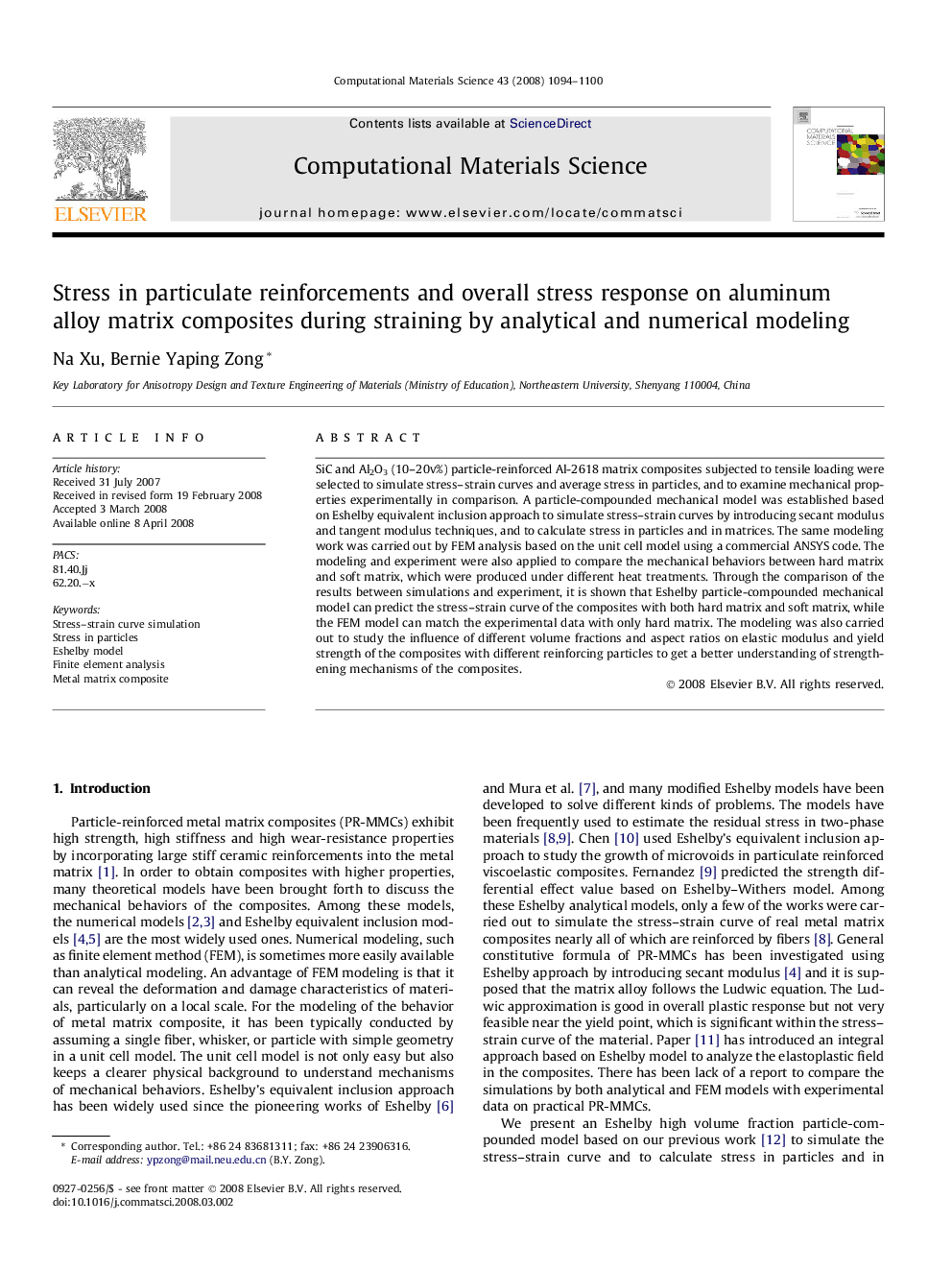| Article ID | Journal | Published Year | Pages | File Type |
|---|---|---|---|---|
| 1563331 | Computational Materials Science | 2008 | 7 Pages |
SiC and Al2O3 (10–20v%) particle-reinforced Al-2618 matrix composites subjected to tensile loading were selected to simulate stress–strain curves and average stress in particles, and to examine mechanical properties experimentally in comparison. A particle-compounded mechanical model was established based on Eshelby equivalent inclusion approach to simulate stress–strain curves by introducing secant modulus and tangent modulus techniques, and to calculate stress in particles and in matrices. The same modeling work was carried out by FEM analysis based on the unit cell model using a commercial ANSYS code. The modeling and experiment were also applied to compare the mechanical behaviors between hard matrix and soft matrix, which were produced under different heat treatments. Through the comparison of the results between simulations and experiment, it is shown that Eshelby particle-compounded mechanical model can predict the stress–strain curve of the composites with both hard matrix and soft matrix, while the FEM model can match the experimental data with only hard matrix. The modeling was also carried out to study the influence of different volume fractions and aspect ratios on elastic modulus and yield strength of the composites with different reinforcing particles to get a better understanding of strengthening mechanisms of the composites.
